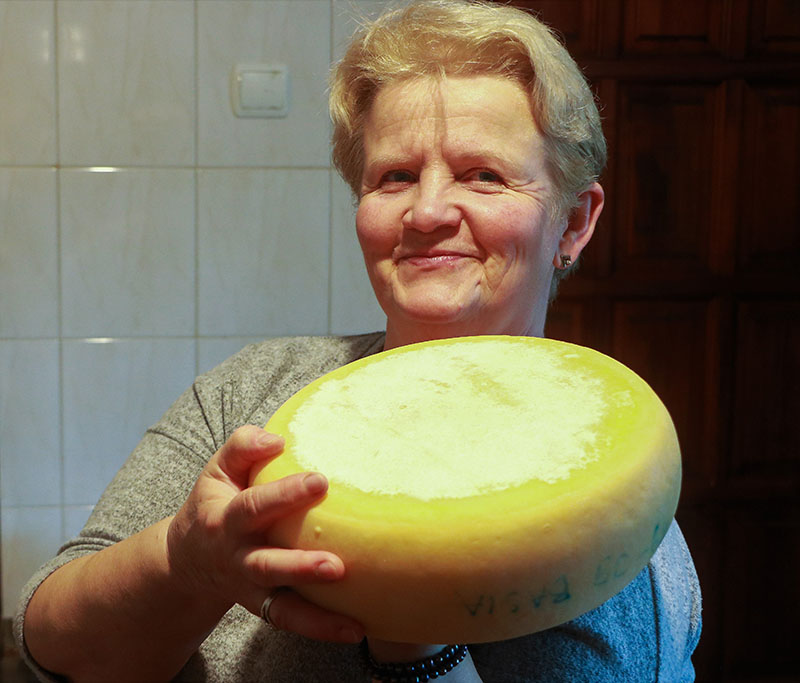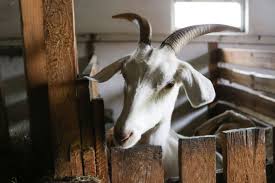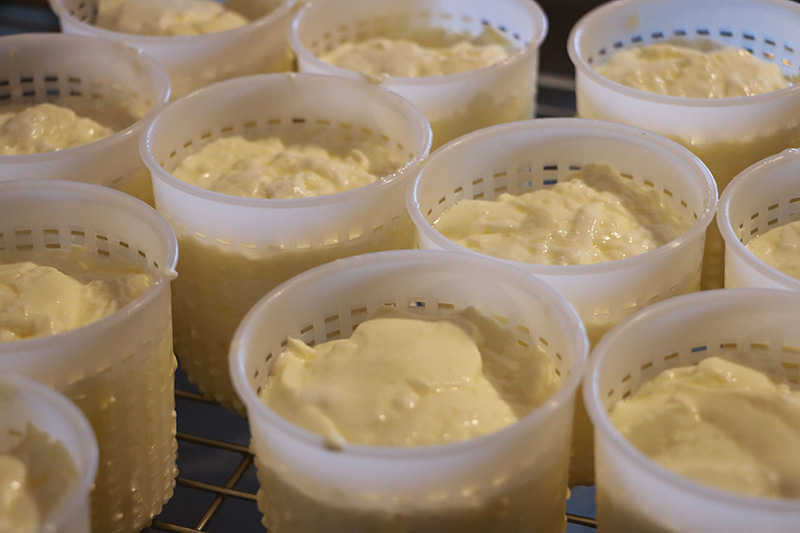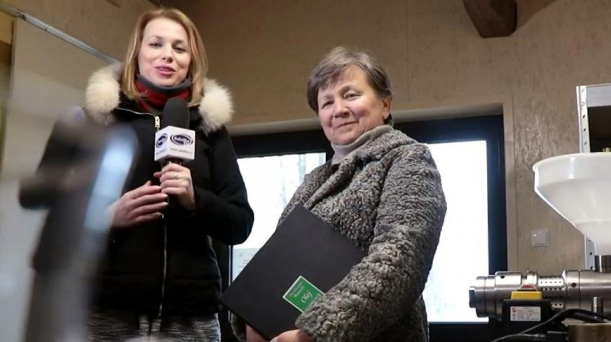A small farm with several goats, sheep and a Jersey cow. Production of cottage cheese, rennet, soft and ripened cheeses with passion and love for animals and nature.

My herd
I am a city girl, from Białystok. All my life I lived in the city, I ran a business there, a restaurant. But I dreamt of living in the countryside – recalls Mrs Basia, sitting on the terrace of her house in Zwierki. – Maybe that’s why I treat all my animals a little differently than conventional farmers, as my family, or rather as my herd. – She laughs and leads us out to pasture as proof. And when she summons a herd of goats and sheep, they run to her and paw at her like cats. – The goats are curious but shy, but you can stroke the sheep as much as you like. Mine are very cuddly.
 Goats in an estate car
Goats in an estate car
It was the children – or more precisely their allergy to cow’s milk – that was the impulse to start the goat adventure. I used to get goat milk in a carton, which was very smelly, or I waited outside the local shop for the man who brought me goat milk every week,” says Barbara Łapińska and recalls how she used to stand in line wondering whether there would be enough milk for her. – When we bought the land in Zwierki, I knew I wanted to have goats. Not just for milk for my kids, but to share with others so they don’t have to worry about not having enough for themselves. That’s kind of my mission. – She explains.
The first goats: Melania and Markiza, she brought in the boot of an estate wagon. It was captured on photos in the family album. There are also photos of a nascent goat farm, the first birth of goats and other members of the herd. – Then came the sheep and recently the Jersey cow, because this breed has very delicate milk, which is great for cheese. – There are also photos of a nascent goat farm, the first birth of goats and other members of the herd. – Then came the sheep and recently the Jersey cow, because this breed has very delicate milk, which is great for cheese. – She says.
From the smithy to the cheese
To learn how to make cheese, Barbara took her first cheese-making course while still running her restaurant. – But it was only part of a series of training courses in traditional crafts, she says. – I first had to take a course in wickerwork, then blacksmithing, pottery, and cheese-making came last – she laughs. – But it was worth it, because as well as seeing how cheeses are made, I learnt how to weave baskets and I made my own horseshoe,” she points to the horseshoe hanging “for luck” over the front door of the house. She sold milk from her goats and later also cheese in her restaurant. When she decided to move completely to the countryside, she also registered as an agricultural retailer. She converted one of the farm rooms into a cheese-making workshop. This is where her cottage cheese, sour rennet, yoghurt, hard ripened cheese, yoghurt and cheese balls in oil are made.

Connected by passion
– I am learning all the time. Together with other cheesemakers, mainly goat farmers, we go on training courses or invite experienced cheesemakers to join us. – She says. – We goat farmers in the area stick together. We meet at workshops and fairs, but also socially. The collaboration with Monika Szymczukiewicz was born out of such meetings. – Initially Monika was my client, then we met as producers of goat cheese and decided to sell our products under a common brand: Zagroda pod lasem (en. Homestead by the forest). – Explains Basia. – We have combined our tastes, our customers, but not only. We also share a passion for good, quality food and, above all, a love of nature and animals.






